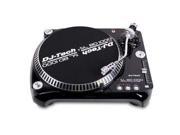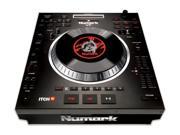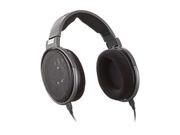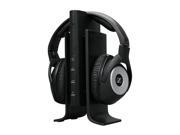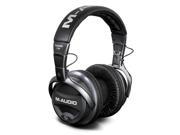-
Master Preparation questions
- –Preparing Vinyl Masters Ready to Cut
- –Vinyl Record Play Times
- –Vinyl Record Masters
- –Record “A” and “B” Sides
- –Vinyl Record Cutting and Phasing
-
Record Pressing questions
-
Record Packing questions
-
Printing Capabilities
- –Label Artwork
- –Record Cover Printing 12″ Records / Albums
- –Record Cover Printing 7″ Records Singles / 45’s
-
Shipping and freight
Preparing Vinyl Masters Ready to Cut
Whether we like it or not most music today has been produced mainly for CD. This indeed has been the case for the past twenty years or so. There are still quite a few mastering engineers who know the ‘secrets’ of mastering for vinyl. Masters produced for CD are often incompatible with masters for vinyl. We at Alpha believe it’s important that any one should know the differences, so you can prepare suitable masters for Vinyl cutting. Please read the following carefully, and if you have any further questions, please email us for further info on this matter.
-
Please make sure all disks sent to us include all the information required
. Please includes a cue sheet with track times, the file type, Bit rate, Sample rate etc, the more information you provide us with, the less room for error. We love to get a clearly marked 24 bit 44.1 Wav or Aiff file, it makes life very easy and it is not hard to do. MP3 and other lossy formats will not be accepted. It is most important for you to tell us the bit rate your master is at, it is not hard for us to establish the correct bit rate but we had instances in particular at 44.1 and 48 where the bit rate was wrongly described. Our software is good however we need to know the exact bit rate so we do not rely on the “smartness” of the software. That makes sure it is 100% right or your tracks may be a bit faster or a bit slower. Not a good thing at all. Besides, quite costly as it will not be picked up until the test pressings have come to you for approval.
Playing Times Of Vinyl Records
Vinyl Records just like any other media have they own unique limitations on side lengths or playing time. These limitations do vary according to the cutting technique used. The longer the sides, the quieter the music has to be cut as the amount of real estate on the record is limited. In simple terms the louder a cut is the ore space it requires on the groove. We will always try to make your music as loud as possible based on the length of the tracks in total per side. However, the following table lists the typical dB levels you should keep in mind for the various formats of vinyl records.
|
|
|||||
| NOTES | NOTES | ||||
| Loud dance / hip-hop | Loud dance / hip-hop | ||||
| Great length for rock'n'roll | Great | ||||
| Good | Maximum recommended | ||||
| OK | Suggest 33 rpm | ||||
| Maximum recommended | |||||
| NOTES | NOTES | ||||
| Loud single | Good & loud single | ||||
| Normal EP volume | Good | ||||
| Maximum recommended | Maximum recommended | ||||
| Getting quiet (Not on Here) | Suggest 33 rpm | ||||
* 7″ records over 6 minutes at 33rpm is not recommended, the sound quality is sacrificed.
Unless a lo-fi sounding record is what you are after, we recommend you steer clear of this.
We will refuse to do it regardless of what you have seen heard own something that has been done as such or been told it can be done or someone will do it for you
Please do not ask for cuts above +4dB Others will tell you they cut at plus 6 plus 8 or whatever fine Any thing above +4 just overdrives all known reproduction equipment sacrificing all your good efforts .
Masters
Masters are accepted on various formats as in reel to reel tape in all sizes cassettes analogue or digital. It is common today to have masters on CD, we can cut off 24 bit data CDs (our preference) as well as 16 bit audio, these are most common. Accompanying the master must be a clearly legible TOC or cue sheet showing the Start and Finish times of each track. We also require the Artist and Title, track names, Label and Catalog Number. If a catalog number is not used we will allocate one as that is how we track our jobs. Any inscriptions required on the vinyl run-out grooves – limit 10 characters- must be clearly written out. Unless specifically instructed otherwise in writing, we will cut your master exactly as it is presented.
We can of course EQ, limit, compress, re-edit as well as do a mastering job on your tracks. We will not do anything unless we are asked to do so. If such work is require we will quote you before hand We will not do any work unless is confirmed by you. We will always submit a pre-mastering and post mastering CDR or cut a dub plate for your approval. Dubplates are cut at an extra cost. A CDR will be at no extra cost as it would be included in our quote.
“A” and “B” Sides
If you are submitting your masters on a CD please note that we need to have the following if all your tracks are included on a single disc. There MUST be at least 30 seconds of silence between sides A & B on your submitted master. Unless of course you are sending in two masters with A side and B side in each one. The written down TOC and cue sheet with the start and finish times must not include this silence. This way we know the start and end of each side of the record. Making a pause command is not enough, so please make sure that this is done as it saves a lot of emails to a fro.
CDR: The best way to do this is to record a 30 sec “silence” track and insert it between sides A& B, so it shows up as “silence” on the TOC, cue sheet, than we will know when side A ends. Any special instructions (eg fade track 3) must be included with the TOC or cue sheet.
Here are some notes that should be taken into account.
All tracks should be level matched and EQ’d to your taste. Unlike CD’s, vinyl levels are relative. There’s nothing to be gained by squeezing a master though a digital maximizer such as a TC Electronics Finalizer set on ‘maximum’ to produce a constant digital level of O dB, unless you particularly like that sort of sound.
Vinyl Record Cutting and Phasing
Notes on the subject.
Simple version:
Please make sure that there are no OUT of phase signal on your masters. The job will then be fine.
For any one who does care about the ins and outs here is the:
Long Version:
Here are some notes on a very important subject in regards to cutting an acetate for a vinyl record. It is important that it is observed or your master would be un-cuttable. When a recording is “in phase”, the cutting stylus moves nicely from left to right, the difference in the signals between left and right channel determines the up and down movement. This is the method used in record cutting since hill and dale cutting was abandoned, when lateral cutting became the norm and when stereo recordings became available. When a signal it’s “out of phase”, the stylus does not move up and down, as there is no difference in the signal between left and right channels. This causes the loss of the groove which will cause the stylus to jump out of the groove given half a chance. In the “good old days” of expensive studios, most good consoles had a ‘phase correlation meter’ on the output. We still have these devices available to us but it will take quite a while to find out if the submitted work is without this dangerous issue. Since phase is irrelevant to CD, this expensive extra is usually unavailable to today’s engineers, CD does not care about it so no one pays attention to it.
Especially critical is the bottom end – when this is out of phase, the recording can be near impossible to cut. Extremely “subby” dance mixes usually present the biggest problem but, are OK if the bass & kick are in phase.
It’s not such a problem for lo-fi garage recordings, unless the feedback gets REALLY “trebly” and piercing, which will be removed during cutting anyway. Well-recorded acoustic stuff is no problem at all. Most problems come from live recordings made from the desk, or from stereo samples where a plug-in DSP has removed a solo instrument or leaving the rhythm track.
Using Stereo widening Plugins is often disastrous, and may cause the inner tracks to sound dull. Mono samples panned near to the center don’t have the same problem.
How can I tell if my mix is out of phase?
If you don’t have a phase correlation meter on your desk or in your hardware, try reversing the phase of one side of your mix and listen to the result in Mono, panning both sides to the center.
If the mix is entirely in phase and the levels match, then the result will be almost silence.
Reverb’s and flanged/phased sounds won’t entirely cancel because they rely on being a bit out of phase to work.
As long as the result is mainly high frequency, there won’t be a problem. If heaps of bottom end still comes through, there will be a problem and the record may need a remix in order to be cut at all.
Hint: Many mixers invert the phase of the signal from the Aux sends, so you can send one side of the mix from an Aux send, return it to another channel and then mono it as above to check the phasing.
Be sure to bring phasing up with whoever is mixing your next recording and we won’t have to spend 6 hours and $300 in acetates waxing those phat beats. So please be aware of this as it leads to major headaches when trying to cut vinyl from digitally recorded or mixed masters. So, be aware and ask your mastering guy to avoid this issue its not hard and it should not cost you any more if he is mastering your material for CD as well as vinyl.
Label Artwork
We can accept artwork via email or on a disc. Photoshop/Quark/Illustrator files are all OK on either Mac or PC, but please make sure they’re completely ready to output to film.
Please make sure that you download the correct label art die on this PAGE page as well as the Adobe Distiller settings.
If you’re providing film for us to print the labels, ensure that the film is screened at no more than 60%, or 30% recommended for solid.
If you cannot do this, we will arrange the printer to do this for you, but again you will be charged extra for this service.
Labels with solid art stick to the pressing plates, often causing damage and necessitating a re-cut, or another set of stampers which costs you time and us money.
The most difficult color in this case is solid black, besides it shows up every little scratch and nick, avoid it if you can.
Our printers can tackle anything you throw their way. Contact us by telephone for details or email us.
7″ — 92mm diameter
12″ — 102mm diameter
It is best to use our ready templates by (HERE) and choosing the appropriate size
When laying out your label artwork, be sure to allow 3mm of bleed around your artwork, and ensure that the 2 sides of labels A and B are set out at least 10mm apart from cut to cut.
For good results it’s best not to rule a line around the diameter of the label, sometimes this can be visible on the finished label when it gets punched out on the die cutter. The same applies to the hole in the centre of the labels just use a small dot or cross to mark the middle of your artwork. this will get drilled or punched out.
Record Cover Printing 12″ Records / Albums
We can print standard 7″ and 12″ covers.
We hold standard Jackets in stock In Black or white.
These are available With or Without Holes.
We can also work with you to develop unique packaging ideas for your projects.
Here are some examples for printed jackets with corresponding sizes:
12″ Standard jacket, holds one 12″ vinyl record.
12.25″ x 12.25″ with 0.125″ spine.
12″ Gate-fold jacket, holds up to two 12″ vinyl records. One pocket can be glued shut.
Flat: 13″ x 12.375″
12″ Wide spine jacket, holds two to three 12″ vinyl records.
12.25″ x 12.25″ with 0.1875″ spine.
12″ European style jacket, holds one 12″ vinyl record.
12″ x 12″ with no spine.
12″ Standard Blank Jacket. Holds one 12″ vinyl record. These Jackets have an Un-coated side which is ideal for silk screening.
12.25″ x 12.25″ with or without hole.
Don’t see what you are looking for? Click here to contact us for a quote on your requirements.
Record Cover Printing 7″ Records Singles / 45’s
We can print standard 7″ and 12″ covers.
We hold standard Jackets in stock In Black or white.
These are available With or Without Holes.
We can also work with you to develop unique packaging ideas for your projects.
IE: 7″ box sets holding 6-12 singles
7″ standard jacket, holds one 7″ vinyl record.
7.125″ x 7.125″ with no spine.
7″ Gate-fold jacket, holds up to two vinyl records.
Flat: 14.8125″ x 7.125″
7″ Standard Blank Jacket.
Holds one 7″ vinyl record.
10 pt. Uncoated side can be used for silk screening.
7.125″ x 7.125″
Dubplates DJ’s Or 1 off’s
Alpha Records can cut your one off Dubplate, Just what you may need to test out your latest tune on the dance floor, or to make a special battle weapon 12″ for DJ battles!
If you are interested in Dubplates call Alpha Records to check out what your record may sound like on Vinyl, book a fast, fat, loud and funky cut!
We have a range of Dubplates for you.
Below is a grid for 12″ dubs.
If you wish to have a 7″ or a 12″ dubplate cut please contact us.
Single sided 12″ – $85
Double sided, same program each side 12″ – $105
Double sided, different program each side 12″ – $155
Forms of Payment
We accept bank wire transfers there may be extra charges, checks, cashiers checks, money orders, cash, as well as any other secure form of payment.
We accept VISA, MASTER CARD, DISCOVER and AMERICAN EXPRESS for final invoice payments.
Customer agrees that they personally bear all financial responsibility of orders placed, and is liable for additional fees, and finance charges due to late payment, Customers also authorizes Alpha Vinyl Record Pressing Inc, to use any and all legal measures to collect any outstanding balance.
This includes but is not limited to charging your credit card for any amount due, at any time for payment or recovery of any amounts due.
Please make all checks payable to – Alpha Vinyl Record Pressing Inc.



